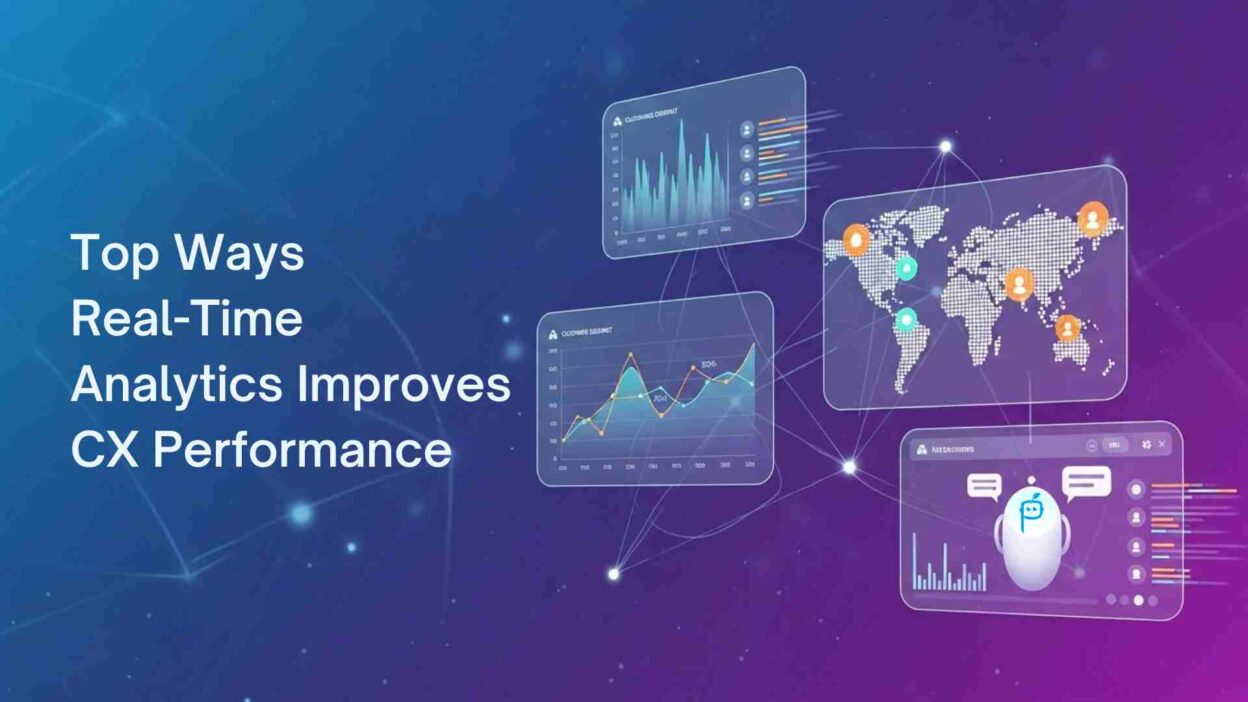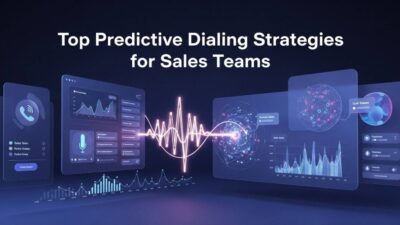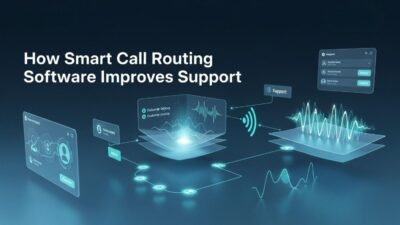Introduction
Table of Contents
TL;DR Customer experience determines business success in today’s competitive marketplace. Companies invest millions in CX initiatives expecting measurable returns. Many organizations struggle to understand what drives customer satisfaction. Traditional analytics deliver insights weeks after interactions occur. Delayed data makes proactive customer service impossible. Businesses need immediate visibility into customer behavior and sentiment.
Real-time analytics transforms how companies understand and serve customers. Instant data access enables immediate response to customer needs. Organizations identify problems before they escalate into crises. Understanding how real-time analytics improves customer experience performance separates industry leaders from followers. The technology provides actionable insights during critical moments. Companies gain the ability to influence outcomes while interactions unfold.
Modern customers expect instant gratification across all touchpoints. Patience for delayed responses has evaporated completely. Brands must anticipate needs and resolve issues immediately. Real-time visibility into customer journeys makes this possible. Organizations leveraging instant analytics outperform competitors consistently. The competitive gap widens as technology capabilities expand.
Understanding Real-Time Analytics in Customer Experience
Real-time analytics processes data instantly as events occur. Information flows continuously from all customer touchpoints. Systems analyze patterns and anomalies within milliseconds. Dashboards update constantly with current customer behavior. Decision-makers access fresh insights without waiting for reports. The speed transforms how organizations respond to customer needs.
Traditional analytics relies on batch processing of historical data. Reports arrive days or weeks after events happen. Organizations make decisions based on outdated information. Customer situations change dramatically during reporting delays. Real-time systems eliminate this temporal disconnect completely. Instant visibility creates opportunities impossible with legacy approaches.
Data sources for real-time CX analytics include numerous touchpoints. Website interactions generate continuous behavioral streams. Mobile app usage produces rich engagement data. Call center conversations provide sentiment and issue signals. Social media mentions reveal brand perception in real-time. Point-of-sale transactions show purchasing patterns instantly. Integration across sources creates comprehensive customer views.
Core Components of Real-Time Analytics Systems
Data ingestion pipelines capture information from diverse sources continuously. Streaming architectures handle high-volume data flows efficiently. Event processing systems filter and route information appropriately. These components work together seamlessly for instant analysis. Robust infrastructure ensures reliability under peak loads.
Processing engines analyze incoming data streams immediately. Complex event processing identifies patterns across multiple signals. Machine learning models score interactions for priority and sentiment. Natural language processing extracts meaning from text conversations. These analytical capabilities produce actionable insights instantly.
Visualization dashboards present information in digestible formats. Real-time charts show trending metrics as they develop. Alert systems notify teams of threshold breaches immediately. Mobile interfaces provide access to critical data anywhere. User-friendly presentation ensures insights drive action effectively. Understanding how real-time analytics improves customer experience performance requires appreciating these technical foundations.
Key Metrics Monitored Through Real-Time Analytics
Customer satisfaction scores update continuously during service interactions. Teams see satisfaction trends emerge in real-time. Dips in scores trigger immediate investigation and intervention. Managers identify top-performing agents and struggling team members instantly. Performance management becomes proactive rather than reactive.
Response time metrics reveal service efficiency moment by moment. Average handle times appear immediately after each interaction. Wait time tracking shows queue status continuously. First-contact resolution rates calculate in real-time. These operational metrics guide staffing and process decisions instantly.
Conversion rates track across all digital touchpoints constantly. Shopping cart abandonment triggers immediate recovery actions. Browse-to-buy ratios reveal product page effectiveness. Lead qualification scores update with each prospect interaction. Revenue impact becomes visible as campaigns execute.
Enabling Immediate Problem Detection and Resolution
Customer issues escalate quickly when left unaddressed. A confused website visitor becomes a lost sale within minutes. An angry customer shares negative experiences on social media immediately. Early detection prevents minor frustrations from becoming major crises. Real-time analytics spots problems as they emerge.
Anomaly detection algorithms identify unusual patterns instantly. Sudden spikes in support calls signal widespread issues. Unexpected drops in conversion rates reveal technical problems. Unusual error messages indicate system malfunctions. Automated alerts notify appropriate teams for immediate action.
Root cause analysis happens during incidents rather than afterward. Teams diagnose problems while customers still engage. Context from real-time data accelerates troubleshooting. Solutions deploy before significant customer impact occurs. This speed transforms crisis management effectiveness.
Reducing Customer Effort Through Proactive Intervention
Customer effort strongly correlates with satisfaction and loyalty. Real-time analytics identifies high-effort situations immediately. Struggling customers receive proactive assistance before requesting help. Chat invitations appear when confusion behaviors manifest. This intervention reduces frustration dramatically.
Journey friction points surface through behavioral analysis. Multiple page refreshes indicate loading problems. Repeated form submission attempts suggest usability issues. Extended time on help pages reveals confusing content. Identifying these patterns enables immediate improvements.
Personalized assistance arrives at precisely needed moments. Previous interaction history informs current support approaches. Purchase patterns guide relevant product recommendations. Communication preferences determine outreach channels. Contextual help feels intuitive rather than intrusive. Implementing how real-time analytics improves customer experience performance delivers measurable effort reduction.
Preventing Churn Through Early Warning Signals
Customer churn rarely happens suddenly without warning signs. Engagement patterns change before customers leave. Usage frequency decreases gradually over time. Support interactions increase as satisfaction declines. Real-time monitoring catches these signals early.
Predictive models score churn risk continuously. High-risk customers trigger retention workflows automatically. Special offers reach at-risk segments immediately. Personal outreach happens before customers decide to leave. Proactive retention proves far more effective than reactive winback.
Sentiment analysis reveals deteriorating relationships immediately. Negative language in conversations signals dissatisfaction. Social media complaints indicate serious problems. Survey responses showing declining satisfaction require action. Early intervention saves relationships that would otherwise end.
Personalizing Customer Experiences at Scale
Personalization drives engagement and conversion dramatically. Generic experiences feel impersonal and irrelevant. Customers expect brands to understand their preferences. Real-time analytics makes mass personalization economically viable. Each customer receives individually tailored experiences.
Behavioral data reveals preferences and interests instantly. Product views indicate consideration sets. Search queries show explicit needs. Click patterns demonstrate content preferences. This intelligence guides personalization automatically.
Dynamic content adapts to each visitor in real-time. Website elements change based on user characteristics. Product recommendations reflect browsing history. Messaging aligns with customer lifecycle stage. Email content personalizes at the moment of opening. This responsiveness creates engaging experiences consistently.
Delivering Contextually Relevant Recommendations
Purchase history informs intelligent product suggestions. Complementary items appear alongside past purchases. Replenishment reminders arrive at optimal times. Style preferences guide fashion recommendations. Personalized suggestions convert far better than generic promotions.
Browsing behavior reveals current interests accurately. Recently viewed items influence homepage content. Abandoned cart products feature prominently across channels. Category exploration guides email campaign content. Real-time behavioral signals enable perfectly timed recommendations.
Collaborative filtering identifies patterns across similar customers. Users with comparable preferences receive matched suggestions. Popular items within segments get highlighted appropriately. Social proof elements reinforce recommendations credibly. These techniques multiply recommendation effectiveness. Understanding how real-time analytics improves customer experience performance includes mastering personalization.
Optimizing Communication Timing and Channels
Customer availability varies throughout days and weeks. Real-time analytics identifies optimal contact moments. Engagement rates guide message timing automatically. Response patterns reveal preferred communication channels. This intelligence prevents annoying poorly-timed outreach.
Channel preferences differ across customer segments. Younger demographics prefer text and app notifications. Older segments respond better to email and phone. Business customers need different timing than consumers. Real-time segmentation routes messages appropriately.
Frequency optimization prevents communication fatigue. Engagement tracking shows when customers tune out. Message volume adjusts automatically per individual tolerance. Unsubscribe rates trigger immediate frequency reductions. Respecting boundaries builds stronger relationships.
Empowering Frontline Teams with Instant Insights
Customer-facing teams need information during interactions not afterward. Real-time analytics puts critical data at agent fingertips. Complete customer context appears immediately when conversations begin. Teams provide informed personalized service consistently. The quality difference becomes apparent to customers instantly.
Agent performance metrics update continuously during shifts. Individuals see their statistics in real-time. Gamification elements drive healthy competition. Recognition for achievements happens immediately. Instant feedback accelerates skill development dramatically.
Supervisor dashboards show team performance live. Struggling agents receive coaching during shifts. Top performers mentor others in real-time. Staffing adjustments happen based on actual queue status. Operational efficiency improves through immediate visibility.
Providing 360-Degree Customer Views
Complete customer histories load instantly when interactions begin. Previous purchases appear chronologically with details. Support ticket histories show past issues and resolutions. Communication preferences guide current interaction approaches. This context enables personalized service from first contact.
Cross-channel activity consolidates into unified timelines. Website visits, app usage, and store purchases appear together. Email engagement shows alongside phone conversations. Social media interactions integrate with other touchpoints. Comprehensive views prevent repetitive customer experiences.
Predictive insights guide agent approaches proactively. Churn risk scores influence retention efforts. Upsell propensity guides sales suggestions. Sentiment indicators prepare agents for emotional states. Intelligence augmentation makes every agent more effective. Implementing how real-time analytics improves customer experience performance empowers teams significantly.
Enabling Dynamic Scripting and Guidance
Conversation guidance adapts to customer responses in real-time. Scripting systems update based on discussion flow. Relevant knowledge articles surface automatically. Compliance reminders appear when specific topics arise. Dynamic assistance improves both efficiency and quality.
Next-best-action recommendations guide agents during conversations. Systems suggest optimal questions to ask. Response templates accelerate common scenarios. Escalation triggers activate when appropriate. These recommendations improve outcomes while reducing handle times.
Sentiment monitoring alerts supervisors to emotional conversations. Frustrated customers receive priority attention. Angry interactions trigger immediate supervisor visibility. Positive experiences get recognized and reinforced. Emotional intelligence augmentation prevents escalations.
Optimizing Operations Through Continuous Learning
Operational efficiency depends on understanding process performance. Real-time analytics reveals bottlenecks as they develop. Resource allocation adjusts based on actual demand. Continuous optimization happens automatically. Organizations operate at peak efficiency consistently.
A/B testing results appear immediately during experiments. Winning variants roll out without waiting for statistical significance. Poor-performing variations stop immediately. Rapid iteration accelerates improvement velocity. Testing cycles compress from weeks to hours.
Process automation improves through real-time feedback. Workflow effectiveness measures as processes execute. Failure points trigger immediate adjustments. Success patterns replicate automatically. Self-optimizing systems improve continuously without manual intervention.
Forecasting Demand with Greater Accuracy
Real-time data improves prediction accuracy dramatically. Recent patterns inform near-term forecasts. Seasonal variations adjust based on current trends. External factors incorporate through integrated data sources. Forecasting errors decrease substantially.
Staffing optimization happens based on actual demand. Agent schedules adjust dynamically throughout days. Shift swaps happen automatically to match needs. Overtime requirements decrease through better prediction. Labor costs optimize while service levels improve.
Inventory management benefits from demand visibility. Stock levels adjust based on real purchase patterns. Reorder points trigger at optimal moments. Seasonal buying patterns inform procurement. Stockouts and overstock situations both decrease. Understanding how real-time analytics improves customer experience performance extends to operational excellence.
Measuring Campaign Effectiveness Immediately
Marketing campaign performance tracks from launch moments. Engagement metrics update continuously during campaigns. Underperforming segments pause automatically. Budget shifts to best-performing channels instantly. ROI maximizes through real-time optimization.
Creative testing happens at campaign speeds. Multiple variants run simultaneously. Winners emerge within hours rather than weeks. Poor performers stop immediately. Creative resources focus on proven approaches.
Attribution modeling updates with each conversion. Channel contribution calculations refresh constantly. Marketing mix optimization happens continuously. Budget allocation follows performance dynamically. Marketing efficiency increases substantially.
Enhancing Product Development Through Usage Insights
Product teams need customer feedback during development cycles. Real-time analytics provides continuous user insights. Feature usage tracks from release moments. Adoption patterns guide enhancement priorities. Product-market fit improves through rapid iteration.
Usability issues surface immediately after releases. Error rates spike when features confuse users. Support volume increases signal problematic functionality. Real-time monitoring catches problems before widespread impact. Quick fixes prevent user frustration.
Feature popularity reveals what customers value. High-engagement features guide roadmap priorities. Unused capabilities trigger investigation or retirement. Usage patterns inform future development. Customer-centric products emerge from continuous feedback loops.
Reducing Time to Market Through Rapid Validation
Beta testing provides instant feedback on new features. Real users validate concepts in actual environments. Usage patterns confirm or refute assumptions. Problems surface before general availability. Launch confidence increases through real-world validation.
MVP approaches benefit from immediate market response. Minimum viable products test core hypotheses quickly. User adoption validates concepts or suggests pivots. Investment decisions follow real usage data. Risk decreases through rapid learning cycles.
Competitive analysis happens through market response monitoring. Competitor feature launches trigger immediate assessment. Customer reactions guide response strategies. Market positioning adjusts based on customer preferences. Agility provides competitive advantages. Implementing how real-time analytics improves customer experience performance accelerates innovation.
Prioritizing Enhancements Based on Customer Impact
Feature requests accumulate from multiple sources continuously. Real-time analytics quantifies demand for each request. Usage patterns validate stated preferences. High-impact opportunities rise to top priorities. Development resources focus where they matter most.
Technical debt identification happens through performance monitoring. Slow features frustrate users measurably. Unreliable components generate support contacts. Modernization priorities become data-driven. User experience improvements justify technical investments clearly.
Sunset decisions rely on actual usage data. Features consuming resources without delivering value get retired. Customer impact assessments prevent premature removals. Portfolio optimization happens continuously. Product quality improves through focused maintenance.
Building Predictive Customer Experience Models
Historical patterns combined with real-time data enable prediction. Customer behavior follows identifiable patterns. Purchase timing predicts future buying moments. Service patterns forecast support needs. Predictive models guide proactive strategies.
Machine learning algorithms improve through continuous training. Real-time data provides constant model updates. Prediction accuracy increases over time. Edge cases refine model sophistication. Self-improving systems become more valuable continuously.
Prescriptive analytics recommends optimal actions automatically. Systems don’t just predict outcomes but suggest responses. Action recommendations appear alongside predictions. Confidence scores guide human decision-making. Augmented intelligence combines human judgment with machine insights.
Anticipating Customer Needs Before They Arise
Lifecycle stage transitions trigger proactive outreach. New customer onboarding begins automatically after purchases. Usage patterns indicate readiness for advanced features. Anniversary dates prompt renewal conversations. Anticipatory service feels magical to customers.
Seasonal patterns inform timing of relevant offers. Holiday shopping predictions guide inventory and promotions. Weather-related product needs forecast by location. Life events trigger appropriate product suggestions. Contextual awareness creates perfect timing.
Problem prevention happens through predictive monitoring. Equipment usage patterns predict maintenance needs. Subscription usage forecasts service interruptions. Account activity changes signal potential issues. Proactive resolution prevents customer complaints. Understanding how real-time analytics improves customer experience performance includes anticipating needs.
Automating Next-Best-Action Recommendations
Every customer interaction presents opportunities. Real-time systems calculate optimal next actions. Upsell opportunities emerge from usage patterns. Cross-sell suggestions align with established preferences. Service recovery actions activate after negative experiences. Automation ensures consistent optimal actions.
Journey orchestration happens across all touchpoints. Actions in one channel inform others automatically. Email follows up on website visits. Mobile notifications extend digital campaigns. Store visits trigger location-based offers. Coordinated experiences feel seamless to customers.
Testing validates recommendation strategies continuously. Model performance tracks against actual outcomes. Winning strategies propagate automatically. Poor approaches retire immediately. Continuous improvement happens without manual oversight.
Measuring and Improving Customer Lifetime Value
Customer lifetime value determines marketing investment levels. Real-time CLV calculations update with each interaction. High-value customers receive premium treatment automatically. Investment allocation follows value potential dynamically. Marketing efficiency maximizes through intelligent targeting.
Value migration tracking shows changing customer importance. Growing accounts receive nurturing attention. Declining accounts trigger retention efforts. Stable high-value relationships get maintenance focus. Dynamic segmentation ensures appropriate resource allocation.
Profitability analysis happens at customer level continuously. Service costs track alongside revenue contributions. Unprofitable relationships trigger efficiency improvements. High-margin customers receive premium experiences. Economic sustainability guides CX investments.
Identifying High-Value Customer Characteristics
Predictive models identify likely high-value prospects. Behavioral similarities to top customers score leads. Early indicators predict long-term value potential. Acquisition efforts target look-alike audiences. Customer quality improves through intelligent targeting.
Value driver analysis reveals what creates profitable customers. Usage patterns correlating with retention identify key behaviors. Feature adoption influencing expansion gets prioritized. Satisfaction drivers linking to referrals receive focus. Data reveals what truly matters for value creation.
Segmentation refines continuously through real-time learning. Traditional demographic segments prove insufficient. Behavioral micro-segments provide better targeting. Psychographic patterns enhance understanding. Sophisticated segmentation enables precise personalization. Implementing how real-time analytics improves customer experience performance optimizes value creation.
Reducing Customer Acquisition Costs
Channel attribution shows most efficient acquisition sources. Real-time ROI guides budget allocation dynamically. Underperforming channels pause immediately. Winning channels scale instantly. Marketing efficiency improves continuously through optimization.
Conversion funnel optimization happens during campaigns. Drop-off points trigger immediate investigation. A/B tests validate improvement hypotheses quickly. Winning approaches deploy without delay. Conversion rates improve through rapid iteration.
Referral program effectiveness tracks in real-time. Top referrers receive recognition immediately. Referral sources guide prospect targeting. Viral coefficients calculate continuously. Growth levers become clear through immediate visibility.
Integrating Real-Time Analytics Across Technology Stack
Modern technology ecosystems include dozens of platforms. Real-time analytics requires data from all systems. Integration complexity challenges many organizations. Unified customer data platforms solve this problem. Consolidated data enables comprehensive real-time insights.
API connectivity links systems for instant data flow. Event streaming architectures distribute information efficiently. Microservices enable flexible scalable integration. Cloud platforms provide necessary infrastructure. Technical architecture determines analytics capability.
Data governance ensures quality and compliance. Privacy regulations require careful data handling. Consent management tracks permissions in real-time. Security protocols protect sensitive information. Responsible analytics builds customer trust.
Choosing the Right Analytics Platform
Platform selection determines long-term capability and cost. Evaluation criteria include scalability and integration flexibility. Vendor stability affects multi-year investments. User experience determines actual adoption. Technical capabilities must match business requirements precisely.
Implementation complexity varies dramatically across solutions. Some platforms deploy within weeks. Others require months of configuration. Professional services requirements affect total cost. Quick time-to-value often justifies higher licensing fees.
Total cost of ownership includes multiple components. Licensing fees scale with usage and features. Implementation costs depend on complexity. Ongoing maintenance requires dedicated resources. Training ensures teams leverage capabilities fully. Comprehensive cost analysis informs smart decisions. Understanding how real-time analytics improves customer experience performance guides platform selection.
Ensuring Data Quality and Reliability
Real-time analytics depends on accurate data. Garbage in produces garbage out regardless of speed. Data validation rules enforce quality standards. Automated cleansing fixes common problems. Quality monitoring alerts teams to issues immediately.
System reliability determines analytics availability. Downtime creates blind spots in customer understanding. Redundant infrastructure prevents single points of failure. Disaster recovery capabilities ensure business continuity. Service level agreements guarantee acceptable uptime.
Data latency measurement tracks end-to-end timing. Sources with excessive delays require optimization. Processing bottlenecks get identified and resolved. Dashboard refresh rates meet user needs. Performance monitoring maintains system effectiveness.
Frequently Asked Questions About Real-Time Analytics
What differentiates real-time analytics from traditional business intelligence?
Real-time analytics processes data instantly as events occur. Traditional BI relies on batch processing of historical data. Real-time systems enable immediate response to customer situations, while BI reports typically arrive hours or days after events.
Real-time visibility creates opportunities for proactive intervention, whereas traditional approaches limit organizations to reactive responses. The speed difference transforms what companies can accomplish. Understanding how real-time analytics improves customer experience performance requires recognizing this core distinction.
How expensive are real-time analytics implementations?
Implementation costs vary based on scale and complexity.
- Small deployments: $50,000–$200,000
- Enterprise implementations: $500,000 to several million dollars
Cloud platforms reduce infrastructure capital requirements. Ongoing costs typically include licensing, maintenance, and staff. Most organizations realize ROI within 12–24 months, driven by customer experience improvements and operational efficiencies.
What technical skills do teams need for real-time analytics?
Successful initiatives require a blend of talent:
- Data engineers to build and maintain data pipelines
- Analytics professionals to interpret insights
- Business analysts to translate requirements
- Data scientists for predictive modeling
- Visualization specialists to create dashboards
Many organizations partner with consultants initially while building internal capability over time.
How quickly can organizations implement real-time analytics?
Timelines depend on scope and readiness:
- Simple deployments: 2–3 months
- Complex enterprise rollouts: 6–12 months
Phased approaches deliver incremental value, demonstrating quick wins while building toward full maturity. Data integration is typically the most time-consuming step; clean, standardized data accelerates implementation significantly.
Does real-time analytics work for small businesses?
Yes—real-time analytics benefits organizations of all sizes. Cloud platforms enable access without large capital investments. Small businesses often see faster ROI due to agility and focused execution. Growth companies particularly benefit from scalable, targeted implementations that address immediate pain points.
What privacy concerns arise with real-time customer analytics?
Real-time processing increases privacy responsibilities. Organizations must:
- Comply with data regulations
- Manage consent effectively
- Be transparent about data usage
- Use strong security measures
- Apply anonymization techniques
Responsible analytics balances insights with customer rights. Ethical frameworks are essential for implementing real-time analytics that improves customer experience performance.
Read More:-Top 7 Ways AI Transforms Persistent Outreach Success
Conclusion

Real-time analytics fundamentally transforms customer experience capability. Instant visibility into customer behavior enables proactive service. Problems get detected and resolved before escalating. Personalization happens at scale across all touchpoints. Organizations respond to customers during critical moments not afterward.
Competitive advantages compound over time through continuous learning. Companies leveraging real-time insights outperform competitors consistently. Customer satisfaction improves measurably through better experiences. Operational efficiency gains deliver cost savings simultaneously. Revenue growth accelerates through optimized conversion. The business case proves compelling across industries.
Implementation requires strategic planning and technical expertise. Organizations must choose appropriate platforms for specific needs. Data integration presents challenges worth overcoming. Change management ensures teams leverage new capabilities. Investment pays back rapidly through multiple benefit streams.
Understanding how real-time analytics improves customer experience performance guides successful deployments. Leaders recognize technology as strategic imperative not optional enhancement. Early adopters build capabilities competitors struggle to match. The performance gap widens as data compounds.
Customer expectations continue rising relentlessly. Patience for delayed responses has disappeared completely. Brands must anticipate needs and resolve issues instantly. Real-time analytics makes this level of service economically viable. Organizations without instant visibility fall behind irreversibly.
Future success depends on embracing real-time capabilities now. Technology continues evolving toward even faster insights. Predictive capabilities grow more sophisticated constantly. Integration options multiply across platforms. Building foundational capabilities today prepares for accelerating innovation.






[…] Read More:-Top Ways Real-Time Analytics Improves CX Performance […]